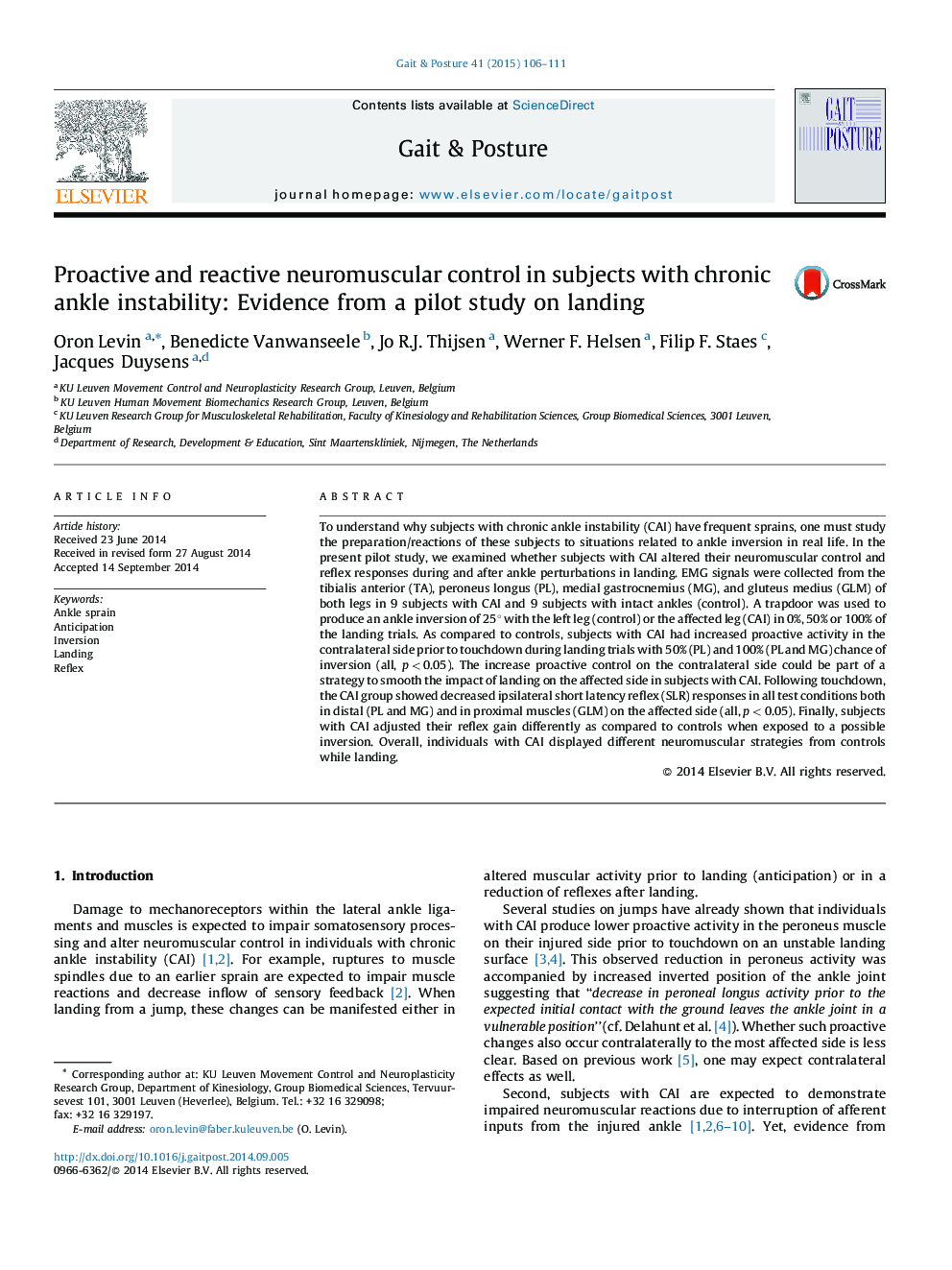| کد مقاله | کد نشریه | سال انتشار | مقاله انگلیسی | نسخه تمام متن |
|---|---|---|---|---|
| 6205666 | 1265627 | 2015 | 6 صفحه PDF | دانلود رایگان |
- Neuromuscular control associated with chronic ankle instability (CAI) was examined.
- Subjects with CAI had increased activity in their distal muscles prior to touchdown.
- Subjects with CAI showed decreased ipsilateral short latency reflex (SLR) responses.
- Subjects with CAI adjusted their reflex gain differently than controls.
- Deficient neuromuscular responses spend beyond the muscles of the affected ankle.
To understand why subjects with chronic ankle instability (CAI) have frequent sprains, one must study the preparation/reactions of these subjects to situations related to ankle inversion in real life. In the present pilot study, we examined whether subjects with CAI altered their neuromuscular control and reflex responses during and after ankle perturbations in landing. EMG signals were collected from the tibialis anterior (TA), peroneus longus (PL), medial gastrocnemius (MG), and gluteus medius (GLM) of both legs in 9 subjects with CAI and 9 subjects with intact ankles (control). A trapdoor was used to produce an ankle inversion of 25° with the left leg (control) or the affected leg (CAI) in 0%, 50% or 100% of the landing trials. As compared to controls, subjects with CAI had increased proactive activity in the contralateral side prior to touchdown during landing trials with 50% (PL) and 100% (PL and MG) chance of inversion (all, p < 0.05). The increase proactive control on the contralateral side could be part of a strategy to smooth the impact of landing on the affected side in subjects with CAI. Following touchdown, the CAI group showed decreased ipsilateral short latency reflex (SLR) responses in all test conditions both in distal (PL and MG) and in proximal muscles (GLM) on the affected side (all, p < 0.05). Finally, subjects with CAI adjusted their reflex gain differently as compared to controls when exposed to a possible inversion. Overall, individuals with CAI displayed different neuromuscular strategies from controls while landing.
Journal: Gait & Posture - Volume 41, Issue 1, January 2015, Pages 106-111
